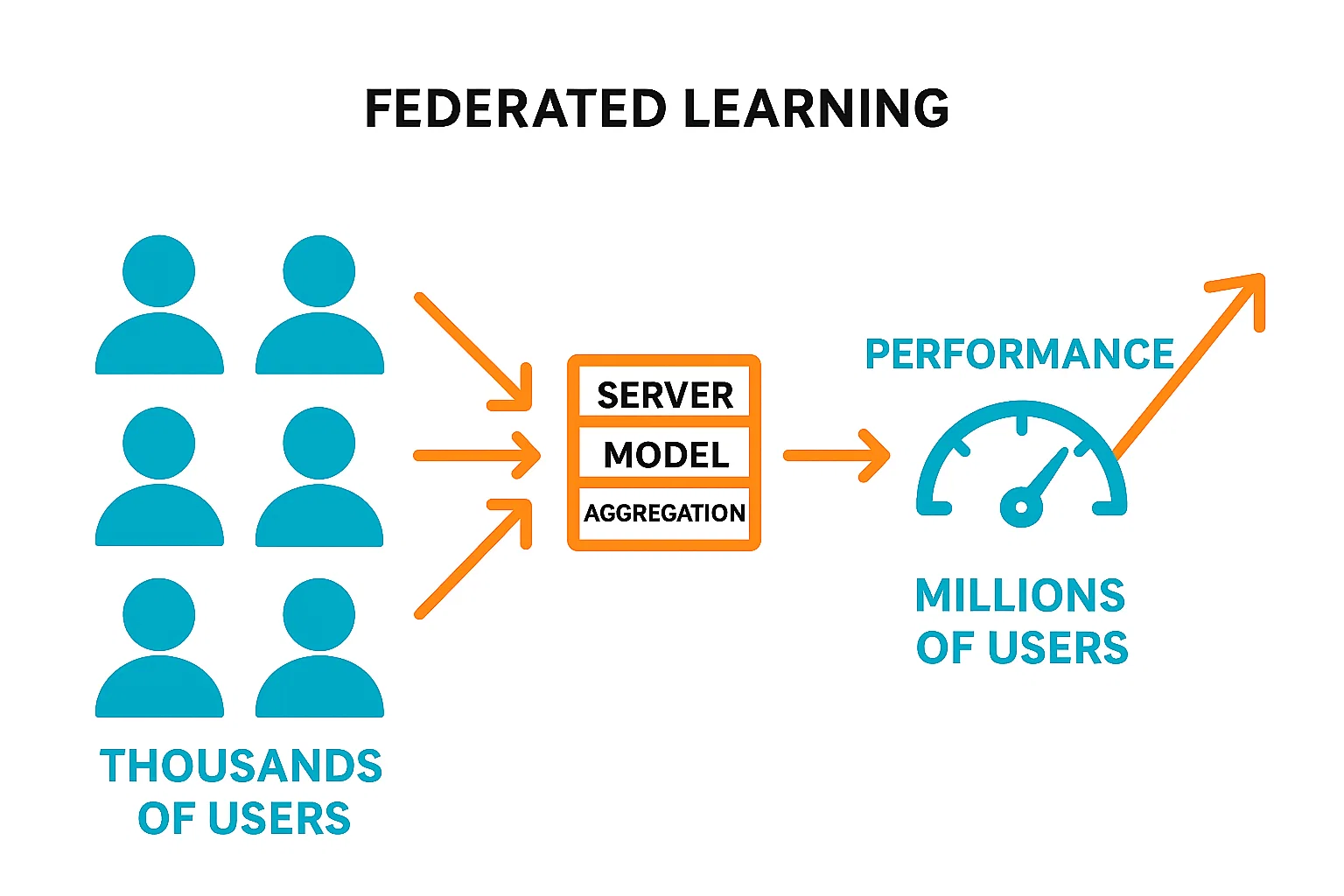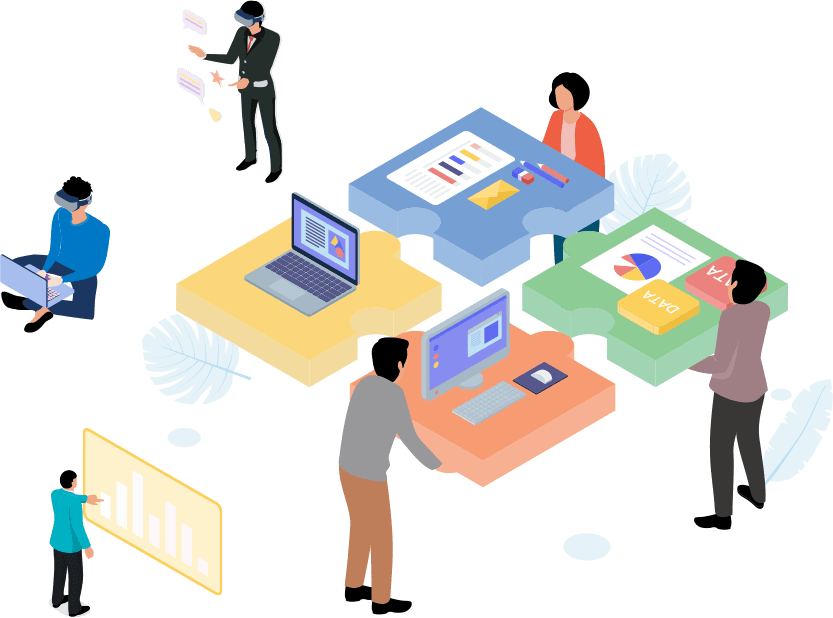143
When 87% of Your Users Ghost You: The Architectural Truth About AI Health Platforms
31 Jul, 2025
5 min read
143
31 Jul, 2025
5 min read
Table of Content

Last month, we met Khalid, a product director at a fast-growing health tech company in Dubai. We were discussing his platform over Arabic coffee when he pulled up his analytics dashboard. The numbers told a story we’ve seen too many times.
“Look at this,” he said, zooming in on the retention curve. “We have 120,000 downloads. Our NPS scores are decent. The UI wins awards. But by day 30, we’re holding onto just 13% of users.”
He paused, then added something that stuck with me: “You know what’s worse? The users who leave aren’t failing because they’re lazy. They’re leaving because we’re failing them when they need us most.”
Khalid had unknowingly identified why the $1.5 trillion global wellness market remains largely untapped. Chronic diseases are the leading drivers of healthcare costs in the U.S., accounting for nearly 90% of the nation’s annual healthcare expenditures, which total over $4.5 trillion.
Diabetes affects approximately 14% of adults in the MENA region, highlighting a critical opportunity for prevention through behavioral changes. In the MENA region, where diabetes affects 1 in 5 adults, the opportunity for prevention through behavioral change is an obvious one to take.
Yet most platforms treat AI like a feature you add, not the product itself.
Think about Sarah, a marketing manager in Riyadh. She downloads your health app on Sunday, motivated by her doctor’s warning about pre-diabetes. Monday goes well—she logs her meals, completes a workout, feels good about the change.
By Wednesday, work stress peaks. She’s running on four hours of sleep. Her back hurts from yesterday’s workout. She opens your app at lunch, exhausted and overwhelmed.
Your platform cheerfully suggests: “Time for today’s HIIT workout! Let’s burn 400 calories! 💪”
Sarah closes the app. She doesn’t open it again.

This is the critical moment where platforms fail. Not because they lack features or data, but because they lack contextual intelligence. They can’t read the room.
When we at Biztech work with health tech companies, we always ask: Are you optimizing for the motivated user on day one, or the struggling user on day 20? Because that’s where the real challenge lies. The struggling user is where your platform either proves its worth or becomes another abandoned app icon.
The pattern is consistent across every platform we’ve studied. Users don’t leave during onboarding. They leave during their first moment of genuine need for adaptive guidance. And that’s an architecture problem, not a UX problem.
We recently reviewed a platform that proudly advertised “AI-powered insights.” Their implementation? They ran clustering algorithms on workout data and sent generic tips based on user segments.
That’s not intelligence. That’s automated categorization.
Let us explain what genuine health intelligence actually requires. Real intelligence means understanding that when someone’s heart rate variability drops 20% below baseline while their calendar shows back-to-back meetings, suggesting a high-intensity workout isn’t just unhelpful—it’s potentially harmful.
At Biztech, we’ve learned something counterintuitive: most teams build data pipelines first and add intelligence later. We’ve found success by inverting this completely. We start by defining the decisions your AI needs to make, then architect the data infrastructure to support those specific (intelligent) use-cases.
Think about it this way. Before writing any code, we map out critical moments where users need intelligent guidance. What decision is Sarah trying to make when she opens the app exhausted? What would truly helpful guidance look like in that moment? Only after we understand these decision scenarios do we architect the systems to recognize and respond to them.
Your platform also needs temporal intelligence that understands patterns over time. Here’s what I mean: Two users might miss workouts for three days. But one is taking strategic recovery after intense training, while the other is beginning to disengage. The data looks identical—missed workouts—but the context determines whether you should encourage rest or provide gentle re-engagement.
How do you architect this distinction? Through temporal pattern analysis that goes beyond simple streak counting. We design systems that understand workout cadence, recovery patterns, life stressors, and individual response to different intervention styles. It’s complex, but it’s what separates a tracking app from an intelligent coach.
When companies come to us about building health platforms, they usually start with features. We start with moments.
Instead of asking “What should our AI do?”, we ask “When do users most need intelligent help?” Through our research and client work, we’ve identified critical intervention moments that make or break user engagement.
There’s the stress cascade, when biometric and behavioral data indicate mounting pressure. There’s the motivation dip, those early signals of disengagement before they become abandonment. We see the progress plateau, when results stall despite consistent effort. Context shifts matter too—travel, illness, or life changes that disrupt routines. And then there are decision points, those pre-meal, pre-workout, or pre-sleep moments when users are most susceptible to poor choices.
This fundamental inversion changes everything about architecture. When intelligence is the foundation, every component—from data models to API design—serves the goal of better decision support. It’s not about having more features. It’s about having the right intelligence at the right moment.
Curious how we could architect intelligence-first health solutions for your platform? Let’s explore what’s possible when AI becomes the foundation, not an afterthought. Get in touch with us.

“Real-time AI” has become a meaningless buzzword. Let us clarify what it actually means for health platforms.
When someone opens your app exhausted and stressed, they’re making a decision about whether to engage with their health goals. You have about 200 milliseconds to show them you understand their context. This isn’t about processing speed—it’s about pre-computed intelligence.
Here’s how we architect this at Biztech. We implement continuous context computation, which means instead of analyzing user state when they open the app, we continuously update context models throughout the day. When they engage, insights are already prepared and waiting.
We also deploy edge intelligence where critical decisions happen on-device. Lightweight models assess immediate context without server round-trips. And through predictive caching, based on user patterns, we pre-compute likely scenarios and cache appropriate responses.
But here’s the thing most teams miss: Real-time health AI isn’t a single model. It’s an orchestrated system of specialized intelligences working together. You need physiological intelligence that understands sleep quality, recovery status, energy levels, and stress indicators. You need behavioral intelligence that recognizes engagement patterns, motivation states, habit formation, and how users respond to different interventions.
Environmental intelligence matters too—understanding schedules, location context, weather impact, and social situations. And in our region especially, cultural intelligence is crucial. This means regional adaptation, religious observance integration, dietary preference modeling, and matching communication styles to cultural expectations.
The challenge becomes: how do these intelligences communicate without creating conflicts or overwhelming users with insights? We implement what we call “intelligence arbitration”—a decision layer that weighs inputs from all intelligence modules and determines the single most valuable intervention for the current moment. It’s like having a team of specialists who confer before giving you advice, but it happens in milliseconds.
Here’s counterintuitive advice: Your health platform MVP should tackle the hardest problem first, not the easiest feature.
Most teams build user registration first, then basic tracking, then simple dashboards, and maybe, eventually, they’ll add AI later. This creates two fundamental problems. First, you’ve architected around passive tracking, making active intelligence exponentially harder to add. Second, you’ve trained users to expect a tracking tool, not an intelligent coach.
At Biztech, we recommend starting with one critical intelligence scenario. For a recent client targeting pre-diabetic users, we built an MVP focused solely on meal timing intelligence. No comprehensive tracking. No social features. No gamification. Just one thing: AI that understood when users were likely to make poor food choices and intervened with contextual guidance.
Your MVP should prove your core intelligence hypothesis. Can AI actually improve decision-making in your chosen health domain? Everything else is secondary until you validate this. The results from this focused approach were remarkable—67% of users followed AI meal timing suggestions, average blood glucose levels improved within 30 days, and retention quadrupled compared to their previous tracking-focused app.
Getting AI to work for 1,000 users? Cute.
But try scaling to millions without the whole thing breaking—that’s where most teams panic and patch.
Engineer to scale from day one, not when things start catching fire.

As we scale platforms, we implement federated learning architectures. This approach serves multiple purposes. It preserves privacy because sensitive health data never leaves user devices. It enables personalization at scale, where models improve based on population insights while maintaining individual adaptation. And it allows regional optimization, where different geographic regions develop specialized model variations.
Now, you might wonder how we maintain model quality across federated systems. We implement hierarchical validation where device-level models must meet baseline accuracy thresholds, regional aggregations undergo quality assurance before propagating, and global model updates require statistical significance across multiple regions.
A common concern we hear is about cost. Won’t running sophisticated AI for millions of users be prohibitively expensive? Here’s how we architect for economic sustainability. We use tiered processing where nano models run on devices in microseconds at no cost, light models on edge servers process in milliseconds at minimal cost, and heavy models in the cloud are used selectively for complex decisions.
We also implement intelligent routing because not every decision needs deep learning. We route requests to the minimum viable intelligence level. And through computation recycling, we recognize that user patterns often repeat, so we cache computed insights and reuse them when contexts match.
Want to discuss how we could architect scalable AI systems for your health platform? Let’s explore approaches that grow intelligently with your user base. Get in touch with us.
During Ramadan, a workout recommendation at 3 PM versus 9 PM isn’t just about timing—it’s about understanding cultural context. This isn’t a localization problem; it’s an intelligence architecture challenge.
At Biztech, we’ve learned that cultural intelligence requires deep architectural thinking. We implement contextual feature engineering where prayer times, cultural meal patterns, and social norms become first-class features in our models, not afterthoughts. Our systems understand behavioral norm modeling—in collectivist cultures, family accountability drives better outcomes than individual goal-setting, so our AI adapts intervention strategies accordingly.
Communication style adaptation is equally important. Direct feedback works in some cultures while gentle suggestion works in others. The same AI insight gets delivered differently based on cultural context. This isn’t about translation—it’s about fundamental differences in how people want to receive health guidance.
How do you validate that your AI respects cultural sensitivities while driving health outcomes? We implement cultural advisory boards and conduct extensive regional testing. You can build the smartest recommendation engine in the world, but if it ignores cultural norms, it’s basically dead on arrival.
Pushing outcomes at the cost of context? That’s how you lose users and trust.
Real impact needs more than tech—it needs the humility to understand the people you’re building for.
Through years of building health platforms, we’ve identified critical architectural decisions that determine success or failure. Let us walk you through the most important ones.
First, there’s the synchronous versus asynchronous intelligence decision. The trap many fall into is building all intelligence as real-time computation. The reality is that 80% of health decisions can use pre-computed intelligence. At Biztech, we architect hybrid systems where immediate needs get synchronous processing while complex optimizations run asynchronously.
Then there’s the monolithic versus modular AI question. Building one massive model that handles everything seems efficient, but health intelligence requires specialized models that excel at specific domains. We design modular intelligence systems where specialized models collaborate through well-defined interfaces. Think of it as the difference between one general practitioner trying to handle everything versus a team of specialists working together.
The deterministic versus probabilistic intervention decision is particularly crucial. Many teams build AI that always gives definitive answers, but health involves uncertainty, and your AI should acknowledge this. We build systems that communicate confidence levels and provide options when uncertainty is high. Users appreciate honesty about limitations more than false certainty.
Here’s something we’ve learned that surprised us: The most sophisticated AI in the world fails if it doesn’t feel human. Users don’t want to interact with an algorithm. They want guidance that feels like it comes from someone who understands their struggle.
This shapes how we architect communication layers. Every AI insight gets filtered through what we call ‘empathy translation.’ The system might determine that a user’s cortisol patterns indicate high stress, their workout consistency has dropped 30%, and their sleep efficiency is declining. But the user doesn’t need to hear about cortisol. They need to hear, “Tough week? Let’s adjust your workout to something gentler today.”
We also build in what we call “failure empathy.” Users skip workouts, eat junk, ignore recommendations—it happens.
If your AI reacts with judgment instead of empathy, congrats, you just designed a shame spiral.
This isn’t about sugarcoating—it’s about building systems smart enough to keep people in the loop, not push them out.
The global wellness market doesn’t need another tracking app. It needs platforms that understand human behavior, adapt to individual contexts, and provide intelligence when people need it most.
At Biztech, we believe the future of health technology isn’t about more features or better dashboards. It’s about building systems that think alongside users, helping them make better decisions in the moments that matter. This isn’t easy. It requires rethinking how we architect platforms from the ground up. It demands deep technical expertise combined with profound empathy for user struggles. It needs teams who can balance immediate market pressures with long-term platform sustainability.
But the impact potential is enormous. Every percentage point improvement in retention represents thousands of people achieving better health outcomes. Every intelligent intervention that prevents a poor decision contributes to reducing the $730 billion preventable disease burden.
If you’re building in the health space, we encourage you to ask yourself some hard questions, such as,
These aren’t just technical questions—they’re fundamental to building platforms that create lasting health change. At Biztech, we don’t just build health platforms—we obsess over making them intelligent and deeply human.
We’ve been in the trenches: shipping products, scaling fast, and yes, faceplanting a few times along the way.
Every project sharpens our edge and deepens our respect for the messy, beautiful dance between tech and human behavior.
Ready to explore how intelligence-first architecture could transform your health platform? Let’s discuss how Biztech can help architect systems that don’t just track health—they improve it.
All product and company names are trademarks™, registered® or copyright© trademarks of their respective holders. Use of them does not imply any affiliation with or endorsement by them.

68
By Biztech
09 Oct, 2025

75
By Biztech
09 Oct, 2025

91
By Biztech
06 Oct, 2025